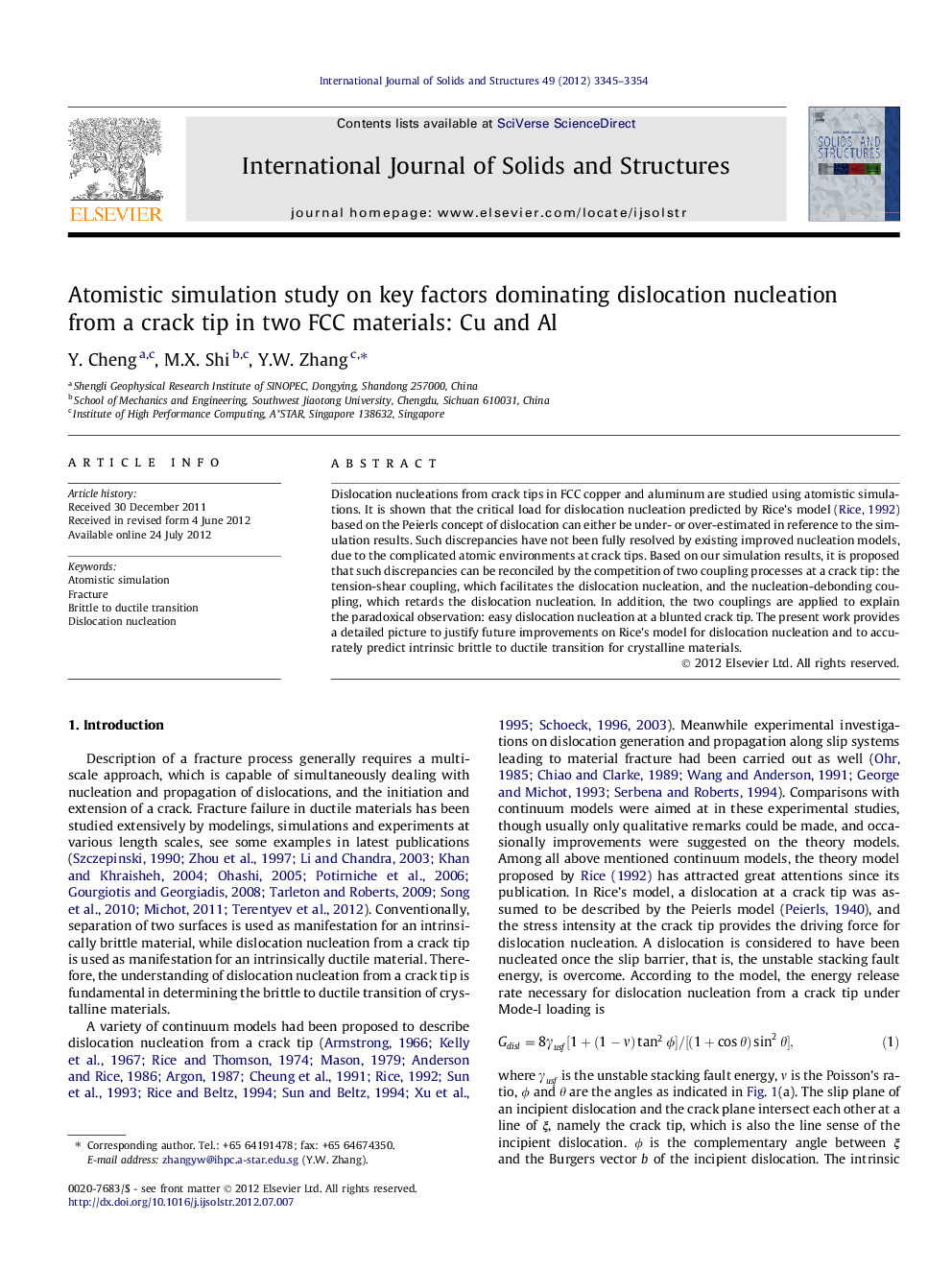| Article ID | Journal | Published Year | Pages | File Type |
|---|---|---|---|---|
| 278185 | International Journal of Solids and Structures | 2012 | 10 Pages |
Dislocation nucleations from crack tips in FCC copper and aluminum are studied using atomistic simulations. It is shown that the critical load for dislocation nucleation predicted by Rice’s model (Rice, 1992) based on the Peierls concept of dislocation can either be under- or over-estimated in reference to the simulation results. Such discrepancies have not been fully resolved by existing improved nucleation models, due to the complicated atomic environments at crack tips. Based on our simulation results, it is proposed that such discrepancies can be reconciled by the competition of two coupling processes at a crack tip: the tension-shear coupling, which facilitates the dislocation nucleation, and the nucleation-debonding coupling, which retards the dislocation nucleation. In addition, the two couplings are applied to explain the paradoxical observation: easy dislocation nucleation at a blunted crack tip. The present work provides a detailed picture to justify future improvements on Rice’s model for dislocation nucleation and to accurately predict intrinsic brittle to ductile transition for crystalline materials.
► Minor modifications have been made to include three more symbols in the nomenclature table. ► Wrong spellings and grammar mistakes are corrected. ► All modifications are highlighted in RED this time.
